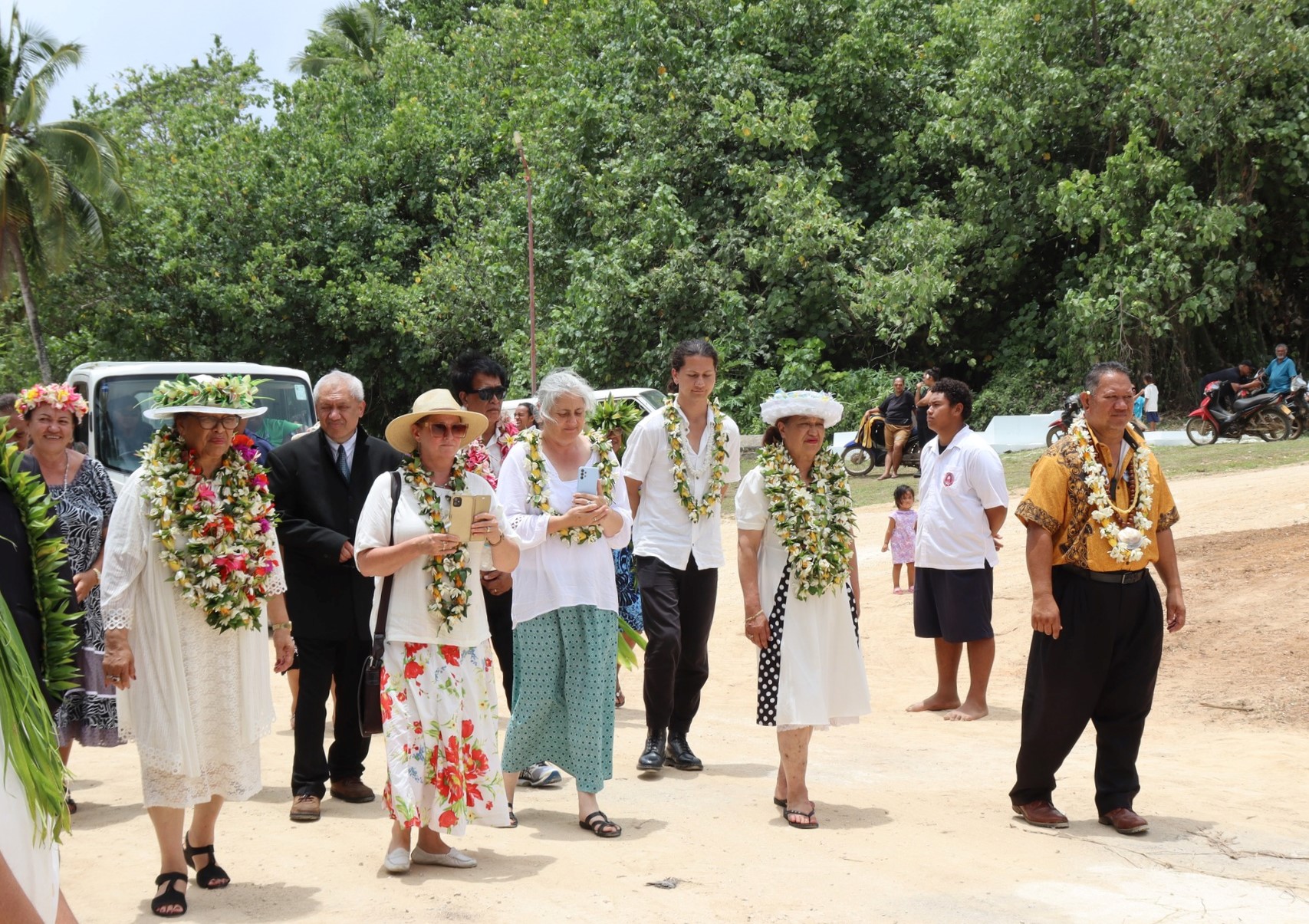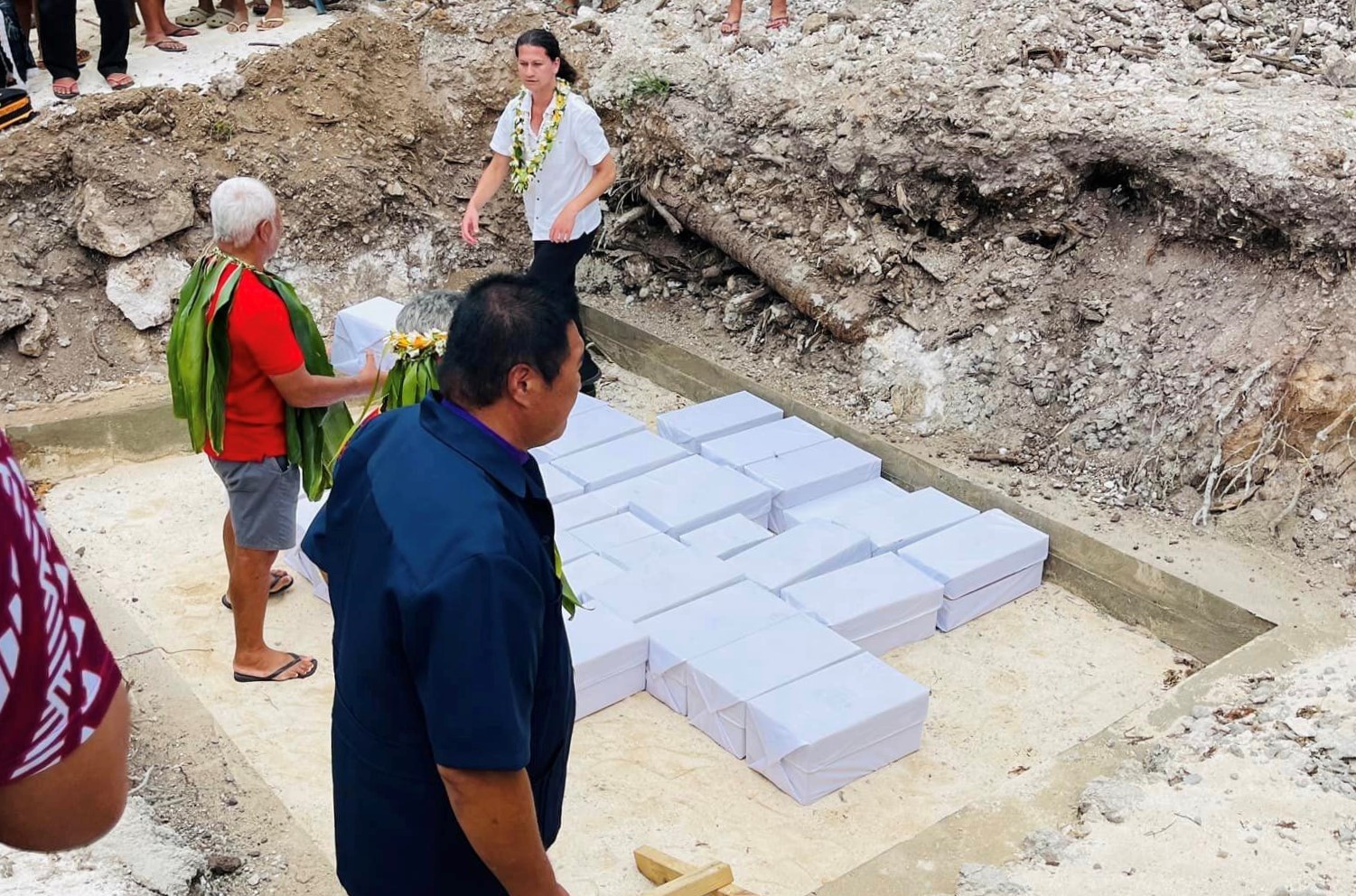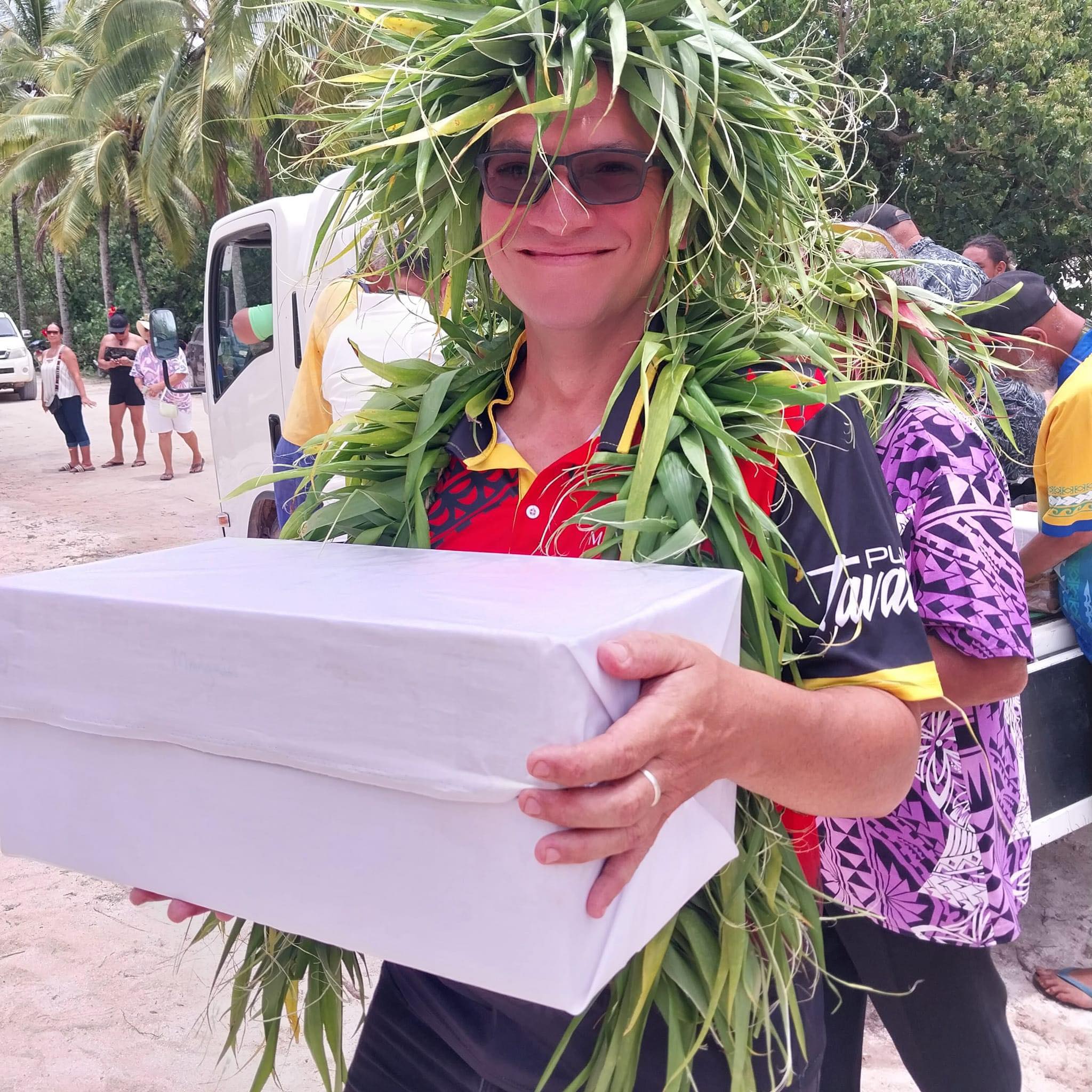Ancestral homecoming: Ui Tupuna remains return to Mangaia after decades
Tuesday 13 February 2024 | Written by Melina Etches | Published in Local, National, Outer Islands

Numangatini Ariki, Tangitamaiti Tereapii (far right) leads the procession for the reburial ceremony of 40 boxes of ancestral bones in Mangaia at Orongo Marae. ANASIENI POKINO/24021221
The remains of over 100 “Ui Tupuna”, ancestors who were separated from their homeland for over three decades, have finally returned to their rightful resting place, at home in Mangaia, Au’au Enua. Melina Etches reports.
On Friday, the community of Mangaia gathered together to pay their respects and mark the emotional and historical ceremony of the reburial of 40 boxes of ancestral remains (bones) from Mangaia.
The remains from Orongo Marae, a well-known burial ground in Mangaia, were taken by Japanese researchers in the 1990s for study with the promise of being returned.
However, the research was abandoned, and the bones ended up at risk of disposal at Kyoto University. Fortunately, a researcher from New Zealand’s University of Otago rediscovered them, and efforts led by Numangatini Ariki, Tangitamaiti Tereapii brought them back to Mangaia for reburial.
After extensive research and meticulous testing on the bones conducted by the University of Otago, the remains were repatriated to the island and reburied. Researchers and archaeologists from the University of Otago were welcomed at Mangaia airport by the island’s chairman Motuanga Kavana and a prayer by Reverend Pumati Pumati.
Numangatini Tangitamaiti Ariki led the procession to the burial site at Orongo Marae where they were greeted with turou by Moroni Tangatakino and Aaron Harry.

The reburial ceremony of ancestral bones in Mangaia at Orongo Marae. METUA VAIIMENE/24021209/ 24021220/ 24021208
Archaeological human skeletons provide direct evidence of the physical features, lifestyle, diseases, mortality, and health of our ancestors.
According to a report shared by archaeologists, an assessment of the bones and fragmented remains revealed the remains of over 100 individuals, with 67 identified as children.
The bones belonged to people from the pre-colonial and post-colonial periods. Findings suggest the possibility of a mass burial event, potentially related to diseases like tuberculosis or measles, before the introduction of vaccinations.
Research on these remains is ongoing and may shed light on what happened during those periods.
Mangaia resident Anaseini Pokino said: “The ceremony was an emotional one for many, one our children will live to tell their children.”
Metua Vaiimene, who also resides on Mangaia, carried one of the boxes of ancestral remains.
“Maybe some of the bones belonged to my own ancestors, we will never be sure, but that they were and are a part of Mangaian history, made me proud to have a small role to play on this occasion,” Vaiimene told Cook Islands News.
“It was the first time anything like this has happened here so the whole ceremony was quite moving. It was great that the occasion involved all parts of the community.
“What’s important for me is that policies and procedures, or guidelines are developed for research on Mangaia, and that these are institutionalised locally so as to benefit education and research as a whole for Mangaians!”

Mangaia resident Metua Vaiimene carried one of the boxes of ancestral remains. SUPPLIED/24021231
According to an island resident, the process of repatriating the remains was initiated by Numangatini Tangitamaiti Ariki while on a visit to Aotearoa fundraising for the celebrations marking the 200th anniversary of the arrival of Christianity in June.
The remains were taken from the island in the early 1990s when a group of archaeologists from Kyoto University in Japan visited Mangaia to conduct research on ancestors, with the approval of the Aronga Mana and Island Council
With the understanding that they would return the bones once they had completed their research and analysis, they took what they had discovered from the marae for identification and research purposes.
However, the research was not completed, as the Professor who had led the expedition appears to have passed away.
Fortunately, and by pure chance, several years later, a researcher from Otago University studying at Kyoto University came across the “Mangaia” bones that were apparently at risk of being discarded.
After urgent communication between Mama Keni Moeroa, of Dunedin, MNZM, who helped establish the Pacific Trust Otago and chaired the University of Otago’s Pacific Advisory Group, and Numangatini Tangitamaiti Ariki, the wheels were set in motion to repatriate the bones to Mangaia, with Ariki leading the effort.














































